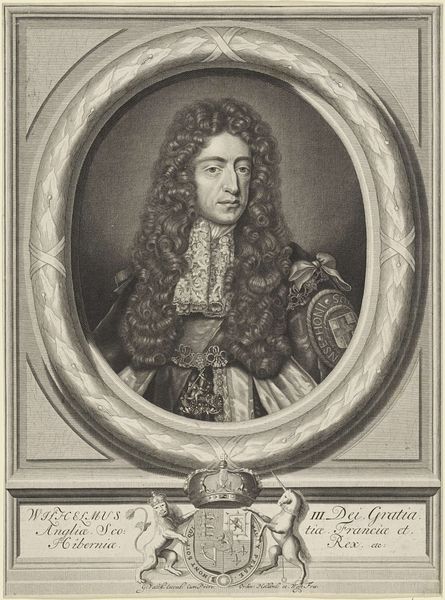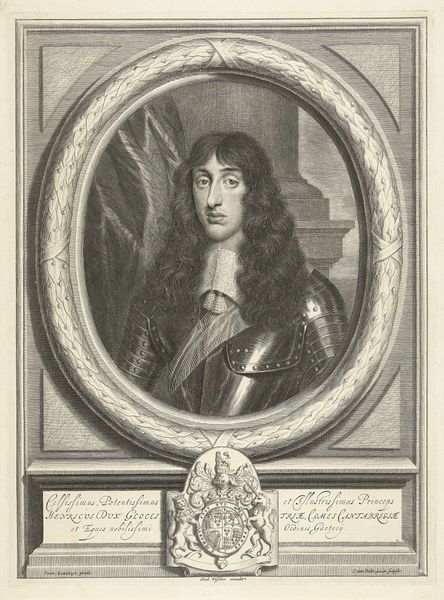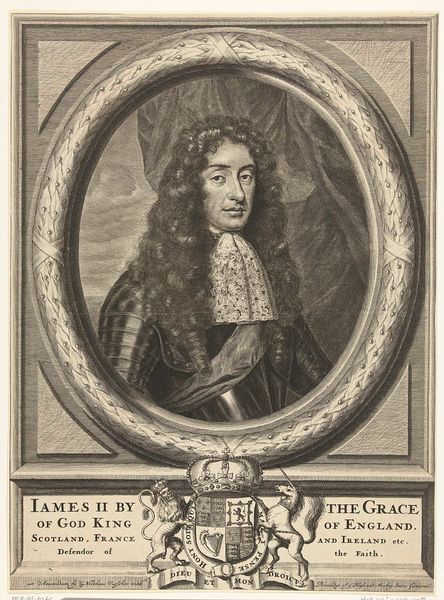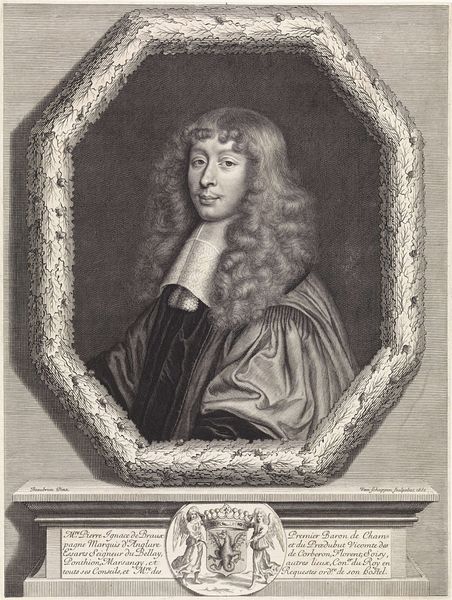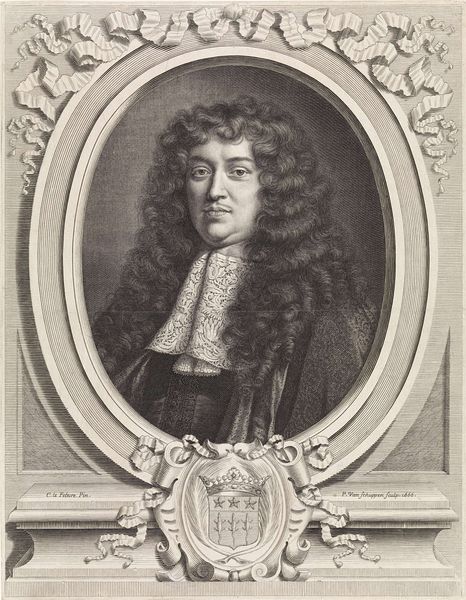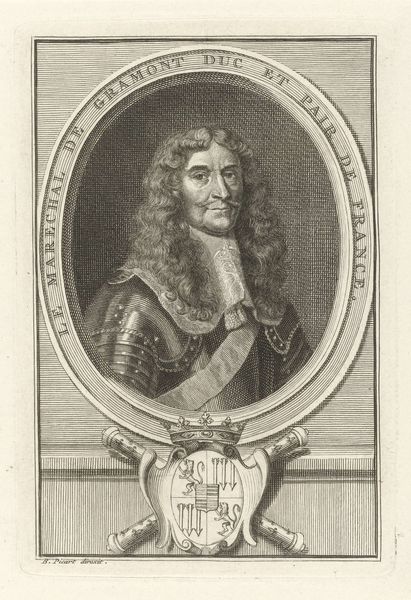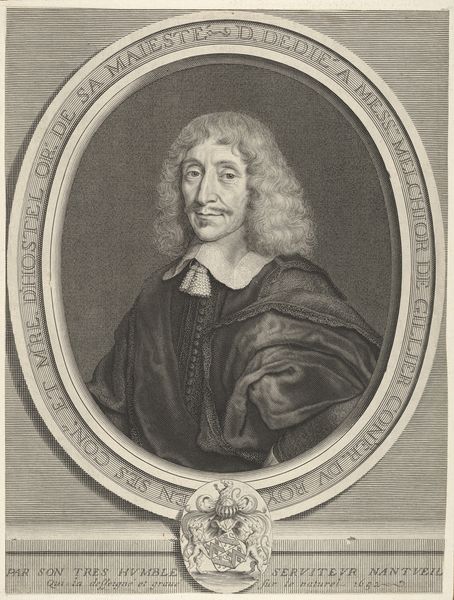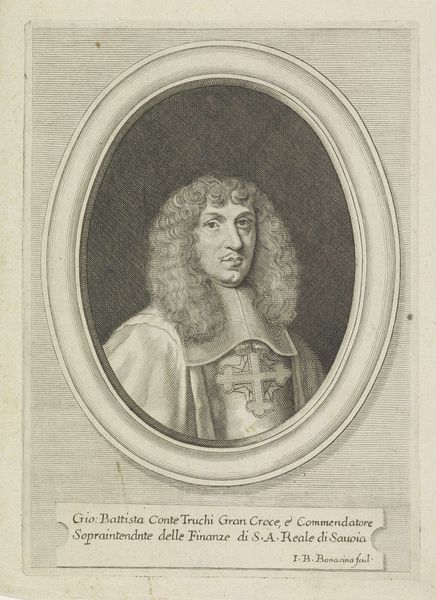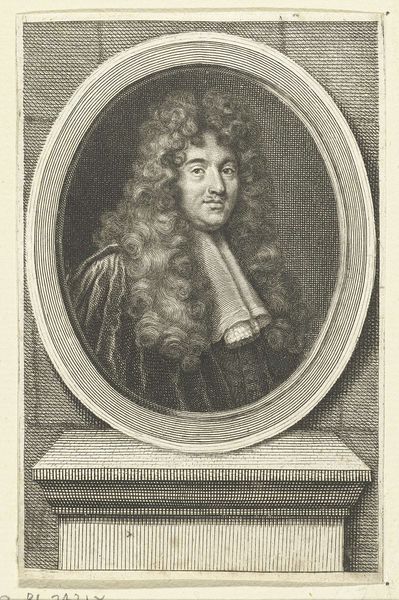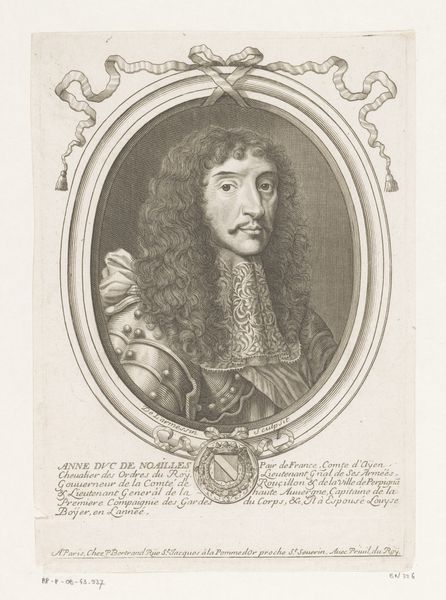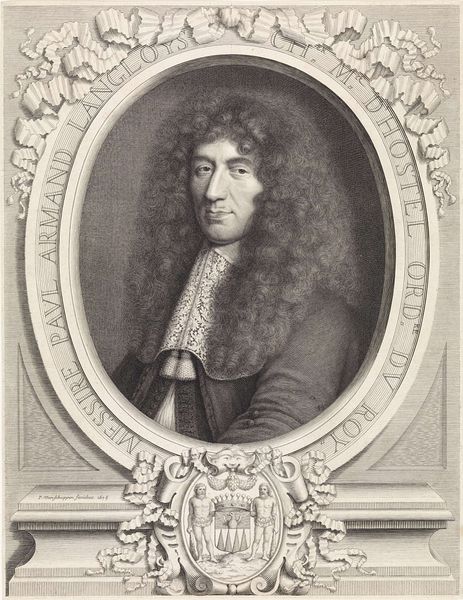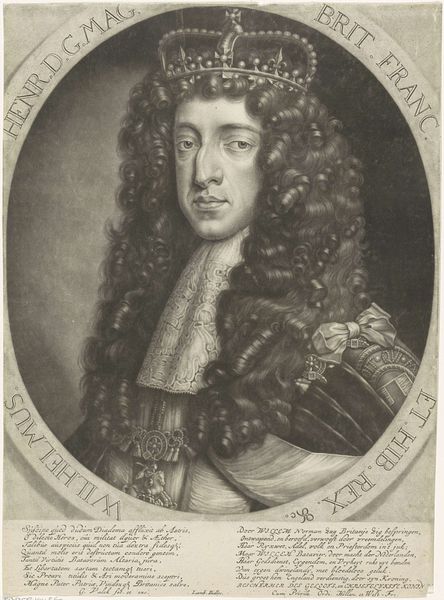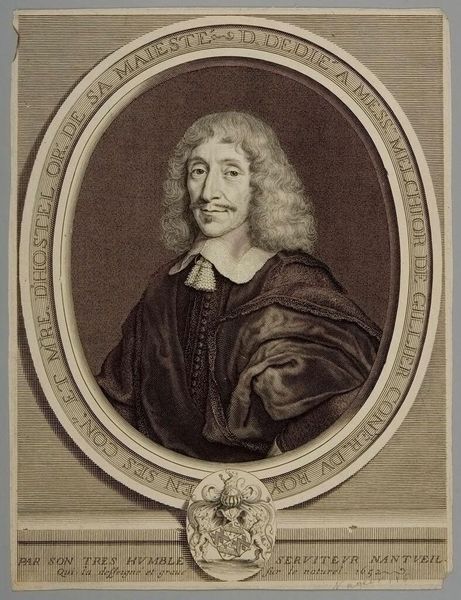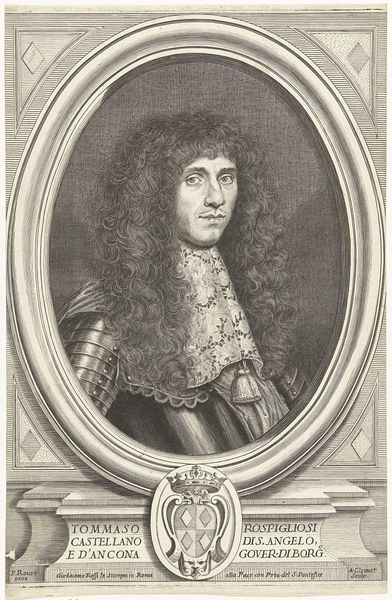
Portret van James Stuart, hertog van York en Albanië, in ovale omlijsting 1648 - 1664
0:00
0:00
cornelisvaniidalen
Rijksmuseum
engraving
#
portrait
#
baroque
#
history-painting
#
engraving
Dimensions: height 379 mm, width 276 mm
Copyright: Rijks Museum: Open Domain
Curator: Welcome. Here we have Cornelis van Dalen II’s portrait engraving of James Stuart, the Duke of York and Albany, created sometime between 1648 and 1664. Editor: Hmm, intense gaze, opulent wig...he seems burdened, trapped almost, by the ornate frame within a frame. Gives me the sense he is a restless royal, maybe with some troubles on his mind. Curator: Observe how van Dalen masterfully employs hatching and cross-hatching to render texture and depth. Note the contrast between the detailed armor, his flowing hair, and the subtle shading around his face, all contained in a rigorous composition dominated by ovals and rectangles. The oval containing James Stuart is an iconic composition dating back to the renaissance for noble portraits. Editor: Absolutely. The artist really nails the formal aspects, even down to that heraldic cartouche down below! I can almost hear the rustle of silk and the clinking of metal! Yet, beyond the technique, doesn't that elaborate frame feel… suffocating? Like it is a bit on the nose in conveying status. Curator: The frame serves as more than mere ornamentation. Semiotically, it's a boundary. It isolates and elevates the Duke. Consider how this pictorial device emphasizes his power and inherent separation from the viewer. Editor: Or perhaps a barrier between him and the artist? One wonders what James Stuart thought, sitting for such a grand, formal depiction. Did he crave this level of authority or chafe against it? It is really impressive how the artist used that black and white print to display texture in such a compelling manner, as you mentioned earlier. It looks and feels rich. Curator: Indeed, van Dalen's print adheres to the visual language of power during the Baroque era, focusing on portraying the sitter according to well-defined conventions, a reflection of that social and political context. Editor: Looking at this portrait engraving, I can not help but wonder about his place in the court or life, about James the human being not James the royal. That formal framework certainly sparks all kinds of stories! Curator: It’s in understanding that interplay – of structure and expression – that we really can begin to understand artworks like this portrait. Editor: Agreed! It definitely reveals hidden layers beneath a very stylish, impressive surface.
Comments
No comments
Be the first to comment and join the conversation on the ultimate creative platform.
